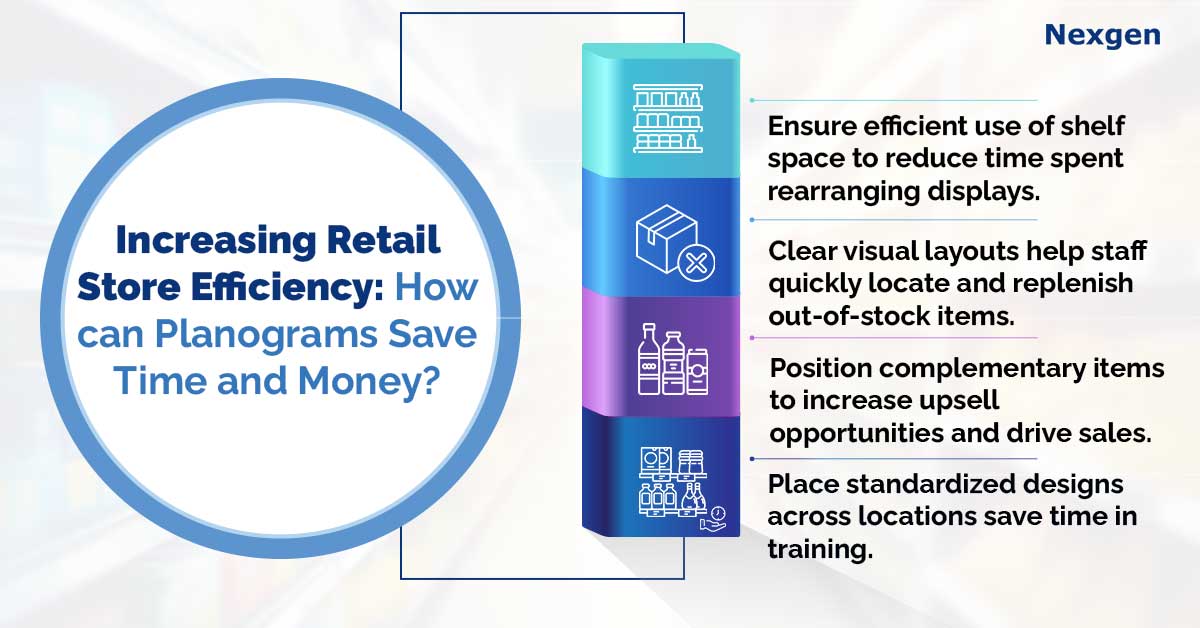In today's fast-paced retail environment, efficiency is key. Every minute counts, and every penny matters. One tool that can significantly boost your store's efficiency is a well-executed planogram. These visual merchandising blueprints not only enhance store layouts but also save time and money in the process. Here is how planograms can revolutionize your retail operations.

1. Improved product visibility.
- Strategic placement: Planograms ensure that high-demand products are placed at eye level and in high-traffic areas, increasing their visibility.
- Reduced out-of-stocks: By optimizing stock levels based on historical data and sales trends, shelf space planning help minimize out-of-stocks, leading to fewer lost sales opportunities.
2. Faster replenishment.
- Standardized layout: A consistent layout simplifies the replenishment process, as employees can quickly identify product locations and restock shelves efficiently.
- Reduced labor costs: Streamlined replenishment reduces labor costs and frees up employees to focus on other tasks, such as customer service.
3. Enhanced customer experience.
- Intuitive shopping: Well-organized shelves and clear product displays create a positive shopping experience, encouraging customers to spend more time in the store and make additional purchases.
- Reduced wait times: Efficient store layouts and faster checkout processes lead to shorter wait times, improving customer satisfaction.
4. Data-driven decision making.
- Performance tracking: Planograms can be used to track the performance of different product placements and identify opportunities for optimization.
- Informed inventory management: By analyzing sales data and consumer behavior, retailers can make informed decisions about inventory levels and product assortment.
Implementing Planograms Effectively
To maximize the benefits of planograms, consider these tips:
- Collaborate with your team: Involve store managers, buyers, and sales associates in the planogram development process to ensure buy-in and effective implementation.
- Utilize technology: Planogram software can automate many tasks, such as generating planograms, tracking inventory, and analyzing sales data.
- Regularly review and update: Regularly review your planograms to adapt to changing consumer preferences, seasonal trends, and product promotions.
- Train your staff: Provide comprehensive training to your staff on how to read and implement planograms.
Overview of Nexgen POG
Nexgen POG is a robust and user-friendly cloud-based visual merchandising tool. It is designed for quick and efficient planogramming with minimal effort. Planogram in retail can be designed by easily dragging and dropping the products. The multi-device compatibility feature of POG allows you to obtain, share and edit planogram on any device, including your phone. It helps in designing store-specific planograms for increased product visibility and sales.
Get Your Free Trial Now!